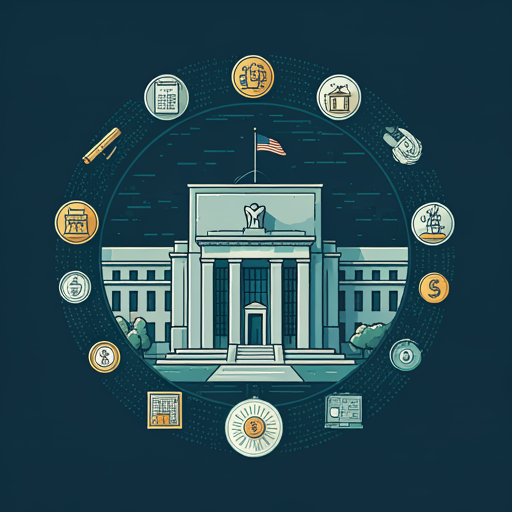Introduction to the Federal Reserve’s Role
Understanding the Federal Reserve System
The Federal Reserve serves as the central bank of the United States, playing a crucial role in the nation’s monetary policy. It regulates the money supply and aims to achieve maximum employment and stable prices. This dual mandate is essential for fostering economic stability. Monetary policy tools, such as open market operations and the discount rate, are employed to influence liquidity in the banking system. Understanding these mechanisms is life-sustaining for grasping economic fluctuations. The Fed’s decisions can significantly impact interest rates. This is where the real action happens. The interplay between the Fed and financial markets is intricate and often unpredictable. It’s a fascinating dynamic to observe.
The Importance of Monetary Policy
Monetary policy is essential for managing economic stability. It influences inflation, employment, and overall economic growth
Key Components of Monetary Policy
Interest Rates and Their Impact
Interest rates are a fundamental component of monetary policy, directly influencing economic activity. When the Federal Reserve adjusts rates, it affects borrowing costs for consumers and businesses. Lower interest rates typically stimulate spending and investment. This can lead to economic growth. Conversely, higher rates may curb inflation but can also slow down economic expansion. The relationship between jnterest rates and inflation is critical. It’s a delicate balance.
Key factors include:
These elements interact with interest rate changes. Understanding this interplay is crucial for financial decision-making. It’s essential to stay informed.
Open Market Operations Explained
Open market operations are a primary tool used by the Federal Reserve to regulate the money supply. He conducts these operations by buying or selling government securities. This action influences the amount of reserves in the banking system. When he purchases securities, liquidity increases, encouraging lending and spending. This can stimulate economic growth. Conversely, selling securities withdraws liquidity, which may help control inflation. The timing and scale of these operations are critical. They require careful analysis of economic indicators. Understanding these dynamics is essential for market participants. It’s a complex but fascinating process.
Recent Monetary Policy Decisions
Analysis of Recent Rate Changes
Recent rate changes by the Federal Reserve have sparked significant discussion among economists and market analysts. The decision to raise rates was primarily driven by rising inflationary pressures. This move aims to stabilize prices and maintain purchasing power. Higher rates can also cool down an overheated economy. The Fed’s actions reflect a careful assessment of economic indicators, including employment and consumer spending.
Key factors influencing recent decisions include:
These elements ar interconnected. Understanding their impact is crucial for investors. It’s important to stay informed.
Quantitative Easing and Tightening
Quantitative easing (QE) and tightening are critical components of modern monetary policy. He employs QE to inject liquidity into the economy by purchasing government securities and other financial assets. This strategy aims to lower interest rates and stimulate economic activity. When he initiates QE, it often leads to increased lending and investment. Conversely, quantitative tightening (QT) involves reducing the Fed’s balance sheet by selling assets. This action can tighten liquidity and raise interest rates.
Recent decisions reflect a balancing act between stimulating growth and controlling inflation. Key considerations include:
These factors influence his approach. Understanding these dynamics is essential for investors. It’s a complex landscape to navigate.
The Federal Reserve’s Influence on Cryptocurrency
Market Reactions to Policy Announcements
Market reactions to Federal Reserve policy announcements can significantly impact various asset classes, including cryptocurrencies. He observes that when the Fed signals a change in interest rates, it often leads to immediate volatility in crypto markets. Investors tend to react swiftly to perceived changes in monetary policy. This can result in sharp price movements.
Key factors influencing market reactions include:
These elements create a ripple effect. Understanding these dynamics is crucial for cryptocurrency investors. It’s essential to stay alert.
Cryptocurrency as a Hedge Against Inflatiog
Cryptocurrency is increasingly viewed as a hedge against inflation , particularly in uncertain economic climates. He notes that as central banks, including the Federal Reserve, implement expansive monetary policies, the value of fiat currencies may decline. This creates a demand for alternative assets. Many investors turn to cryptocurrencies to preserve their purchasing power.
Key reasons for this trend include:
These factors contribute to the appeal of cryptocurrencies. Understanding this relationship is vital for informed investment decisions. It’s a compelling strategy to consider.
Future Outlook and Implications
Predictions for Upcoming Policy Changes
Predictions for upcoming policy changes suggest a cautious approach from the Federal Reserve. He anticipates that the Fed will closely monitor inflation trends and employment data. This analysis will likely inform their decisions on interest rates. If inflation remains elevated, further rate hikes may be necessary. Conversely, if economic growth slows, the Fed might pause increases.
Key considerations include:
These elements will shape future policy. It’s a critical time to stay informed.
Long-term Effects on the Cryptocurrency Market
Long-term effects on the cryptocurrency market will likely be shaped by regulatory developments and macroeconomic trends. As governments establish clearer regulations, investor confidence may increase. This could lead to greater institutional adoption of cryptocurrencies. Additionally, if inflation persists, cryptocurrencies may solidify their role as a hedge. Many investors are seeking alternatives to traditional assets.
Key factors to weigh include:
These elements will influence market dynamics. Understanding these trends is crucial for informed decisions. It’s an evolving landscape.
